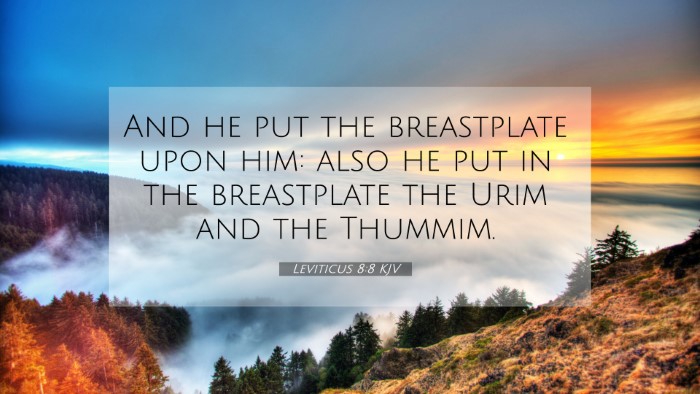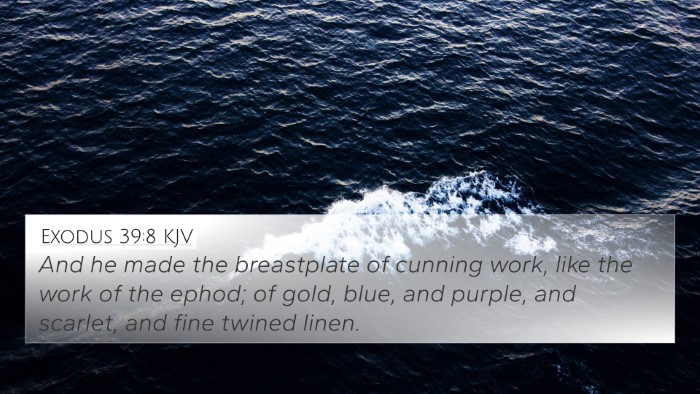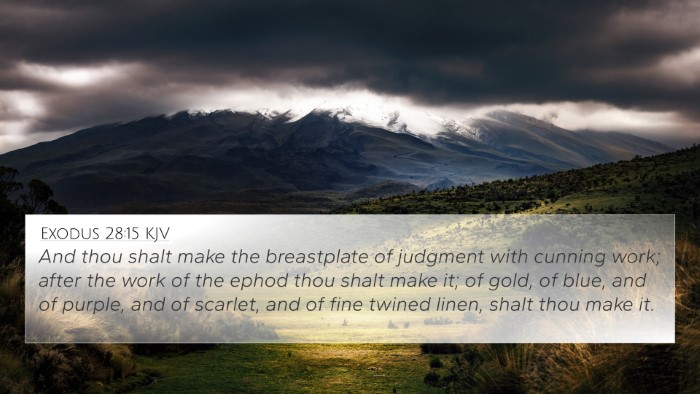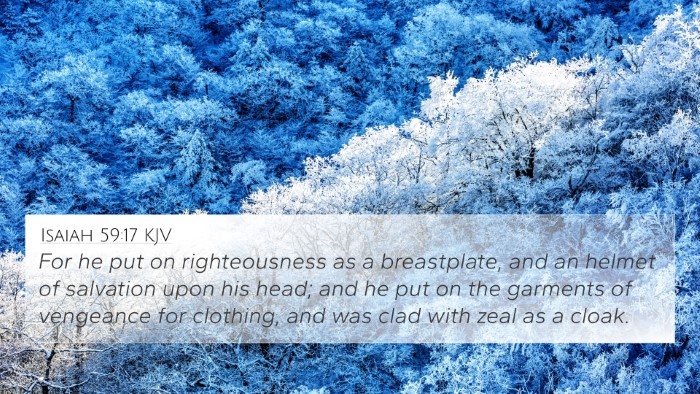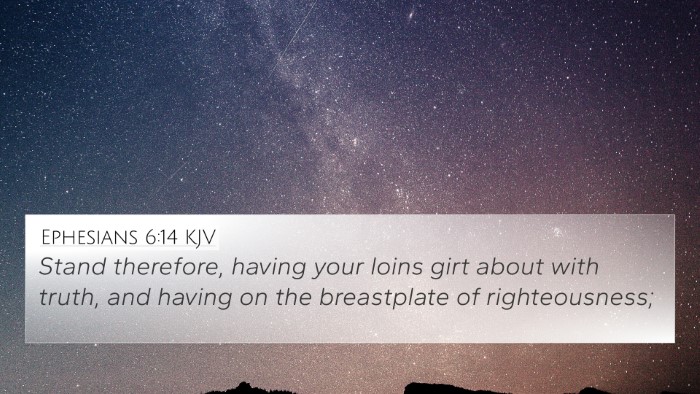Understanding Leviticus 8:8
Leviticus 8:8 states: "And he put the breastplate upon him: also he put in the breastplate the Urim and the Thummim." This pivotal moment involves the consecration of Aaron and his sons as priests. Below, we summarize the interpretations and insights provided by renowned public domain commentaries such as those by Matthew Henry, Albert Barnes, and Adam Clarke.
Significance of the Breastplate
The breastplate worn by the high priest is rich in symbolism, representing the priest's mediatory role between God and Israel. According to Matthew Henry, the breastplate is described as a "breastplate of judgment," emphasizing the importance of divine guidance in the decisions made by the priest. The inclusion of the Urim and the Thummim, as highlighted by Adam Clarke, signifies the means by which the high priest would inquire of God regarding matters concerning Israel, particularly when seeking His will in critical decisions.
The Urim and Thummim Explained
The Urim and Thummim are understood as sacred lots or objects used to discern God's will, as noted by Albert Barnes. Their exact nature remains uncertain; however, they were essential in guiding the high priest. This connection establishes the high priest as a channel through which God communicated truths essential for Israel's spiritual and communal life, illustrating the importance of prophetic revelation in the Old Testament context.
The Role of Priests
The passage marks a crucial moment in the Levitical priesthood's establishment. Henry emphasizes that the priests, particularly Aaron, serve a vital role in facilitating worship and sacrifices, thereby allowing the community to maintain their covenant relationship with God. This initiatory moment underscores the essential link between divine instruction and the priestly office.
Related Scripture References
- Exodus 28:15-30: A detailed description of the high priest's garments, including the breastplate.
- 1 Samuel 28:6: King Saul's use of the Urim to seek God's guidance.
- Numbers 27:21: The importance of inquiring of the Lord through the high priest.
- Hebrews 5:1: Discusses the high priest's role in offering gifts and sacrifices.
- Exodus 28:30: The Urim and Thummim are mentioned as part of the high priest's breastplate.
- Micah 3:11: Critique on those who mislead Israel about God's will.
- Acts 1:26: The casting of lots for the selection of Matthias as an apostle.
Thematic Bible Verse Connections
The theme of seeking divine guidance runs throughout both the Old and New Testaments. By examining related verses, we see the continuity of God's desire for His people to seek His counsel through appointed leaders. The role of the high priest in Leviticus 8:8 establishes a theological foundation for understanding the priestly function that extends to Jesus Christ, our ultimate High Priest in the New Testament, who intercedes on our behalf (Hebrews 4:14-16).
Conclusions from Comparative Analysis
Through a comparative Bible verse analysis, we can appreciate how Leviticus 8:8 reflects broader biblical truths about the importance of divine guidance and the sanctity of the priesthood. The continuing dialogue across scriptures emphasizes that understanding God's will is paramount for spiritual leadership, making the significance of Leviticus 8:8 enduring and relevant for both the ancient and contemporary faith communities.
Tools and Resources for Cross-Referencing
For those interested in deeper study, utilizing a Bible concordance can provide tools for Bible cross-referencing, enhancing your understanding of inter-Biblical dialogue. Engaging in a cross-reference Bible study method offers an effective approach to uncover thematic verses that relate to each other through scriptural analysis.
FAQs on Cross-Referencing
What verses are related to Leviticus 8:8?
Several verses provide insights into the role of the high priest and the significance of the breastplate.
How do Leviticus 8:8 and Exodus 28 connect?
Both passages discuss the vestments of the high priest, particularly highlighting the breastplate's significance.


